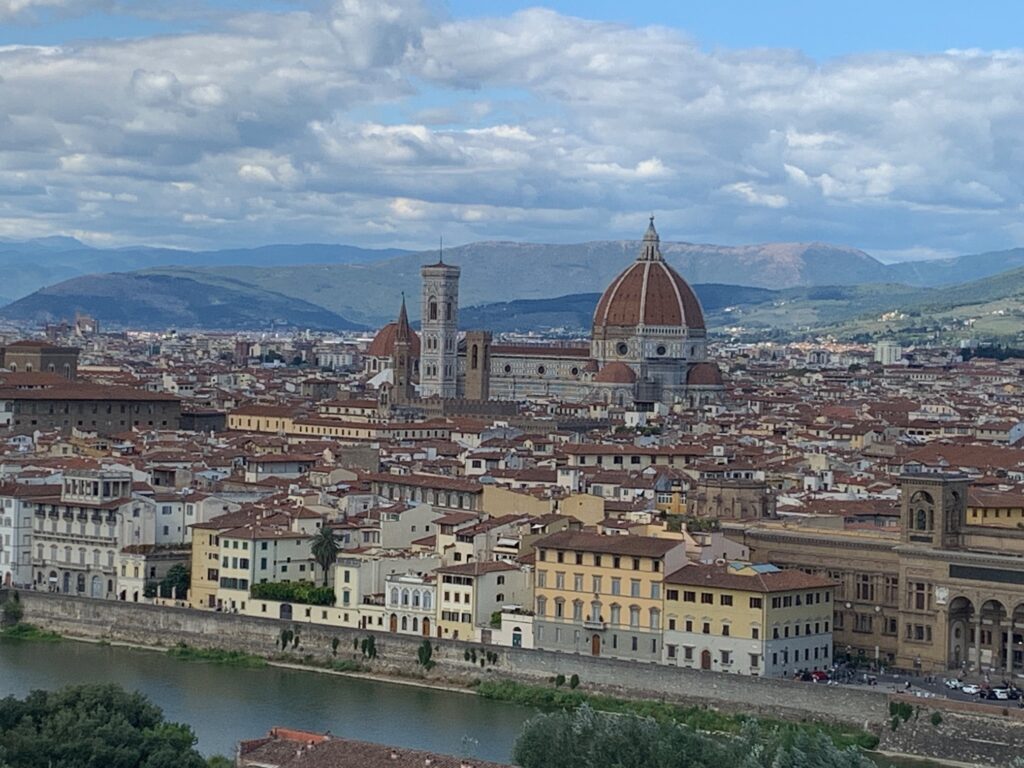The city of Florence viewed from Michelangelo Plaza. The large structure in the middle is the Duomo.
Highlights
- Florence, the renaissance city,
- Lucca, a walled city with lots medieval charm,
- Pisa, everybody wants to see the landmark,
- Saturnia, for a good soaking in lukewarm spring water,
- Bologna, beyond Tuscany.
Time of Visit: September 2023
Duration of Visit: Nine nights
Florence
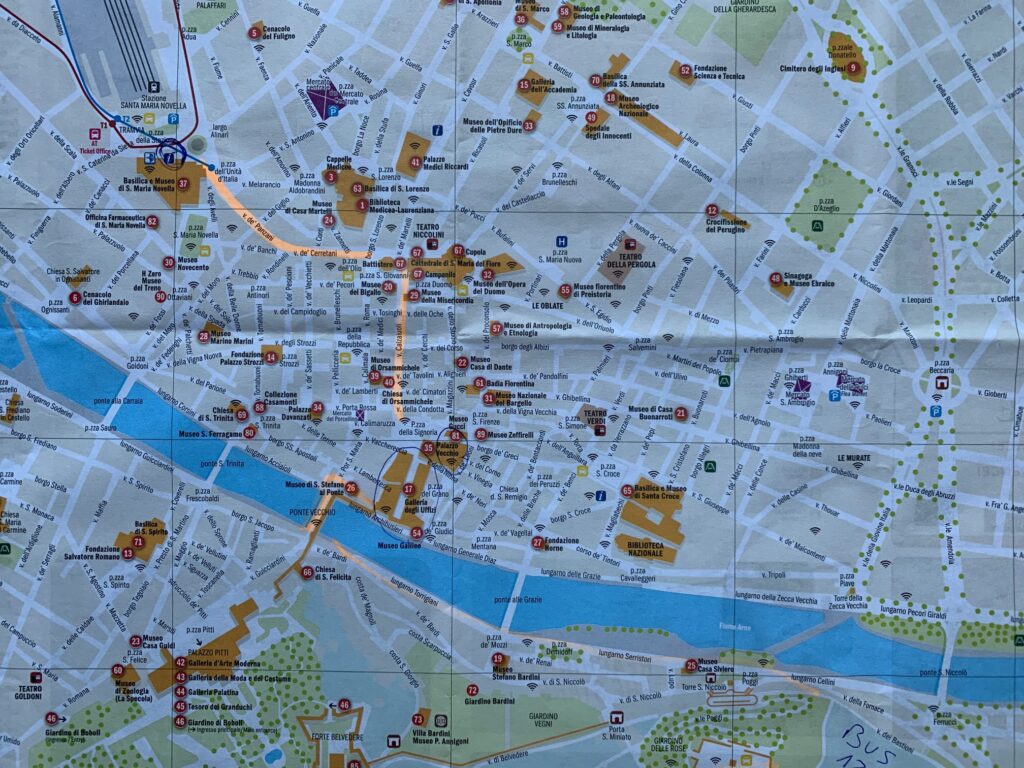

Florence is the capital of Tuscany. Surprisingly, the sites to see are all within walking distance. The place to start is at the tourist office not far from the main train station (shown on Google Maps as Ufficio Informazioni Turistiche Comune de Firenze). The tourist office has maps showing the different places to see.
Not far from the tourist office is the Basilica di Santa Maria Novella. The basilica’s facade and interior showcase its moorish influence. In front of the basilica is a large plaza just perfect for taking selfies with the basilica in the background. Avoid visiting Florence on Sundays if you want to enter any church or basilica. These places are closed to visitors when mass services are held.
As if the Basilica di Santa Maria Novella is not large enough, the Duomo, a few minutes walk away, is even bigger. The Duomo is massive and looks more like a complex with multiple structures. Expect to see a lot of people here.
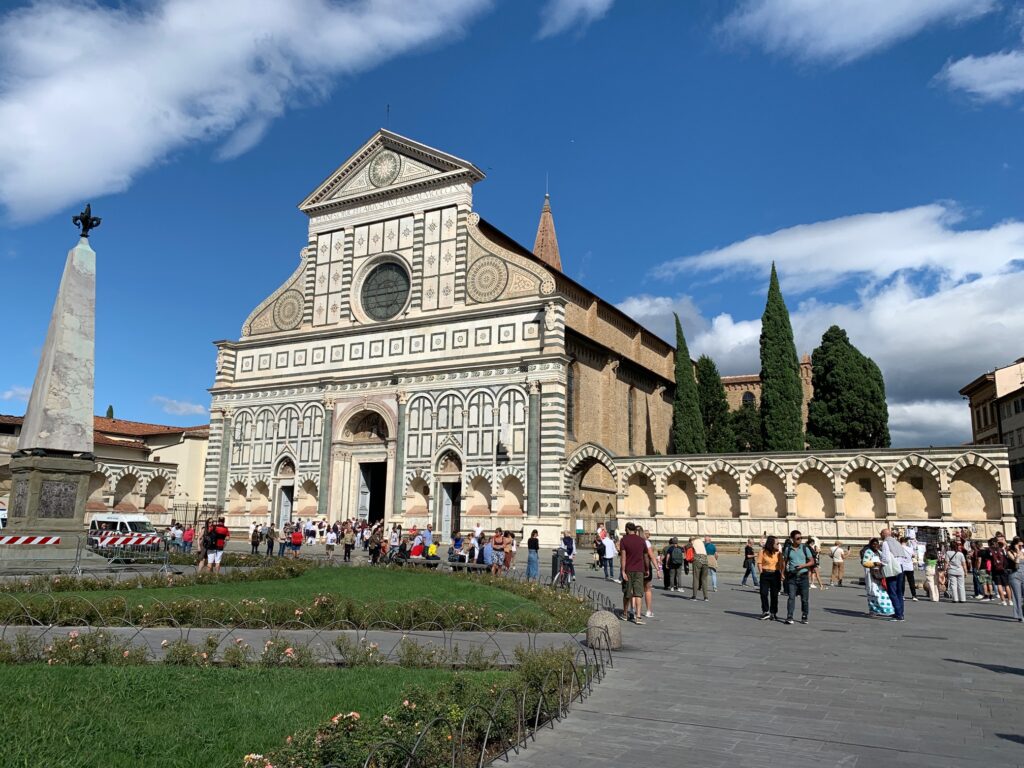

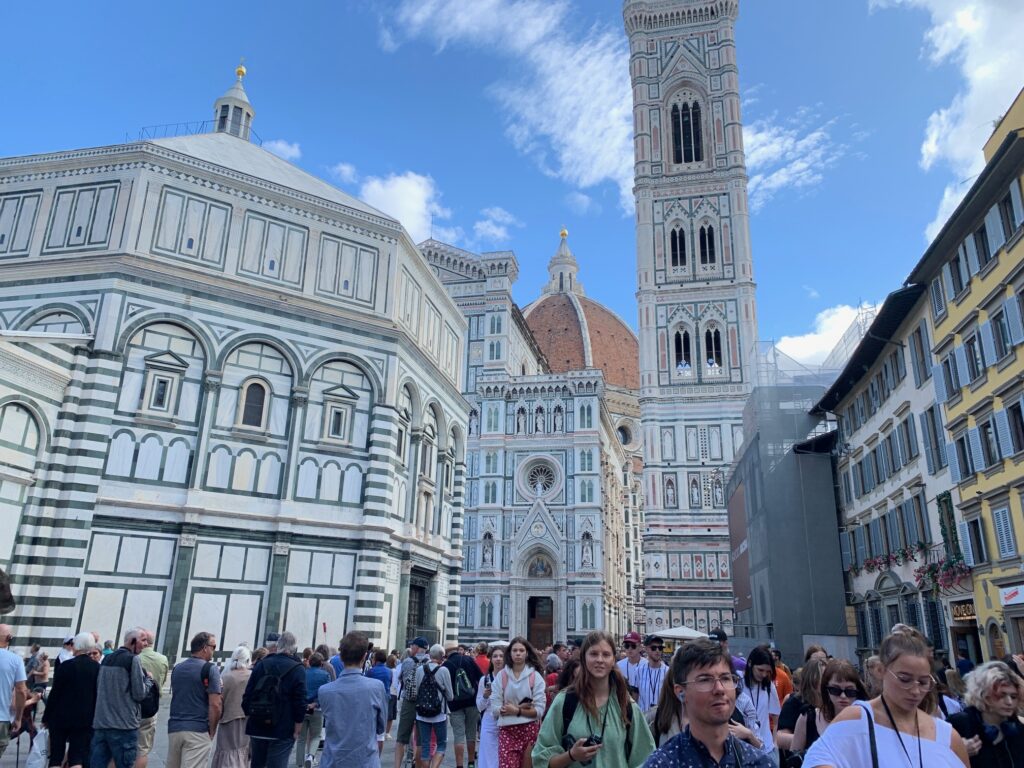

There are several plazas that have sculptures and water fountains. To us, what stood out was the Fountain of Neptune. There are multiple fountains and sculptures here.
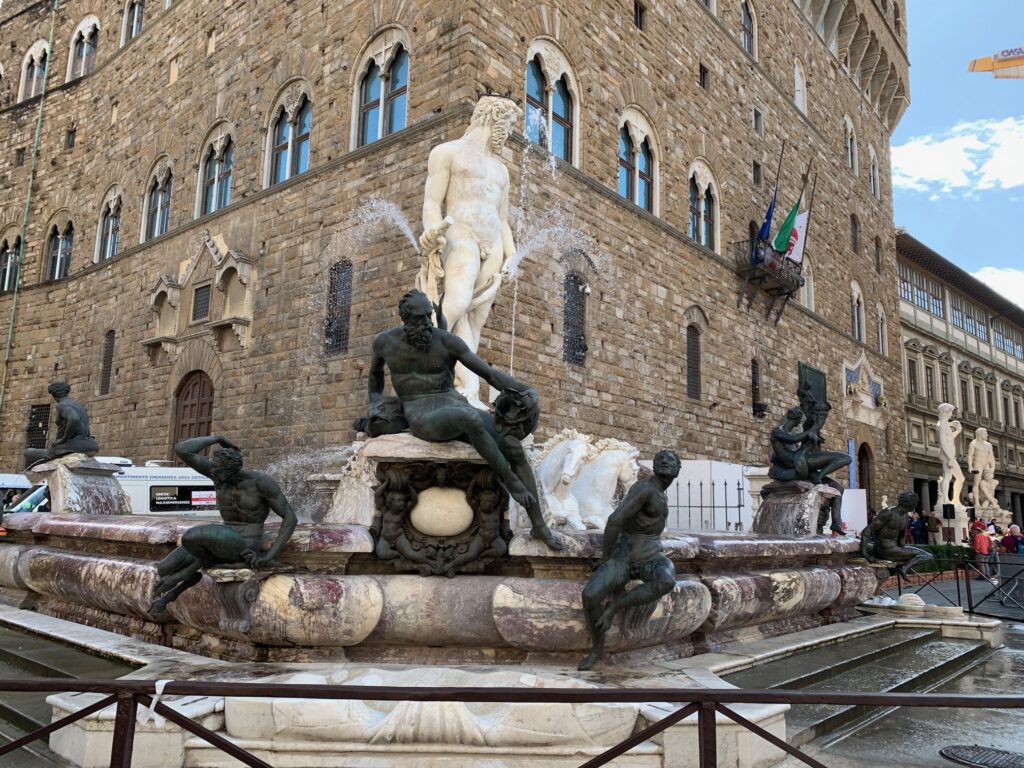

The most memorable place in Florence is Michelangelo Plaza where we saw the entire city from a high vantage point. It was not a bad walk to the plaza but it had a short uphill climb. After the plaza, we got in line to get tickets at the Accademia Galleria to see the David statue. We waited for 30 minutes but we only advanced one third of the way from where we started and it was already 5 PM. So the lesson learned here is to do the Accademia Galleria first.
Lucca
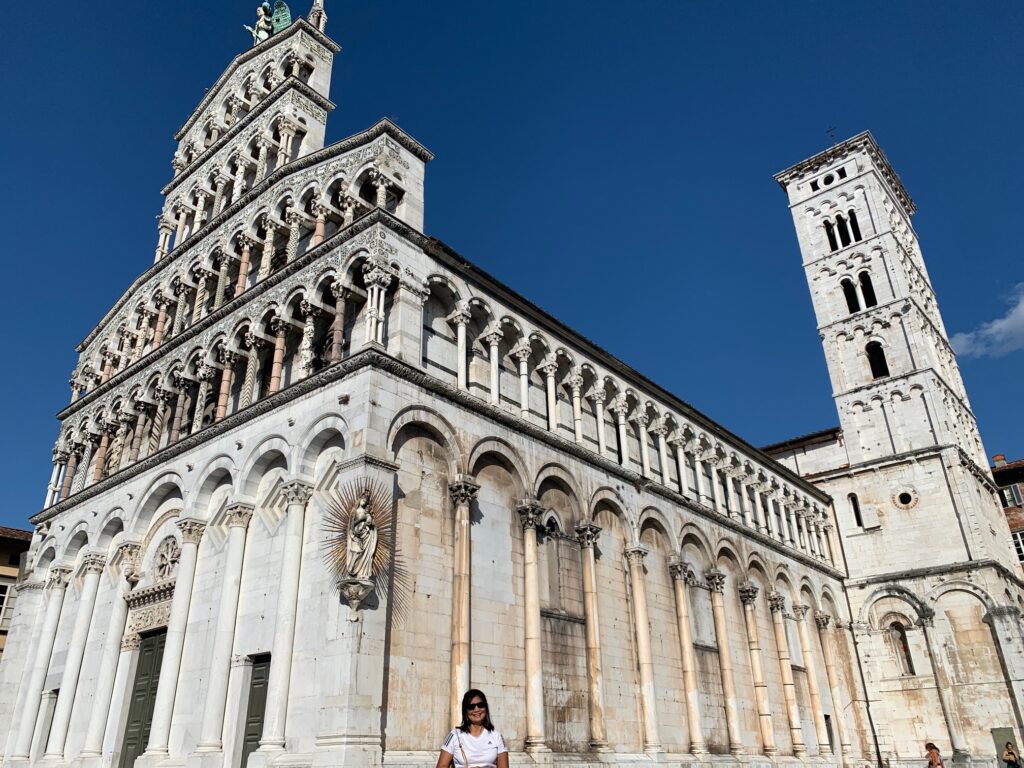

We found out about Lucca after asking one of the staff working the entryway at the Pisa Cathedral for her suggestion of places to see in the area. Initially, we planned on going to Livorno which is a town by the Ligurian Sea. The lady suggested Lucca instead. Fortunately, Lucca is a short train ride away from Pisa.
Lucca is an enclosed city. Its tall walls are pretty much intact throughout. The old part of the city which is within the walled area is very walkable. Expect to spend at least a couple of hours here just walking and taking in the nostalgia of what feels like walking through a medieval town.
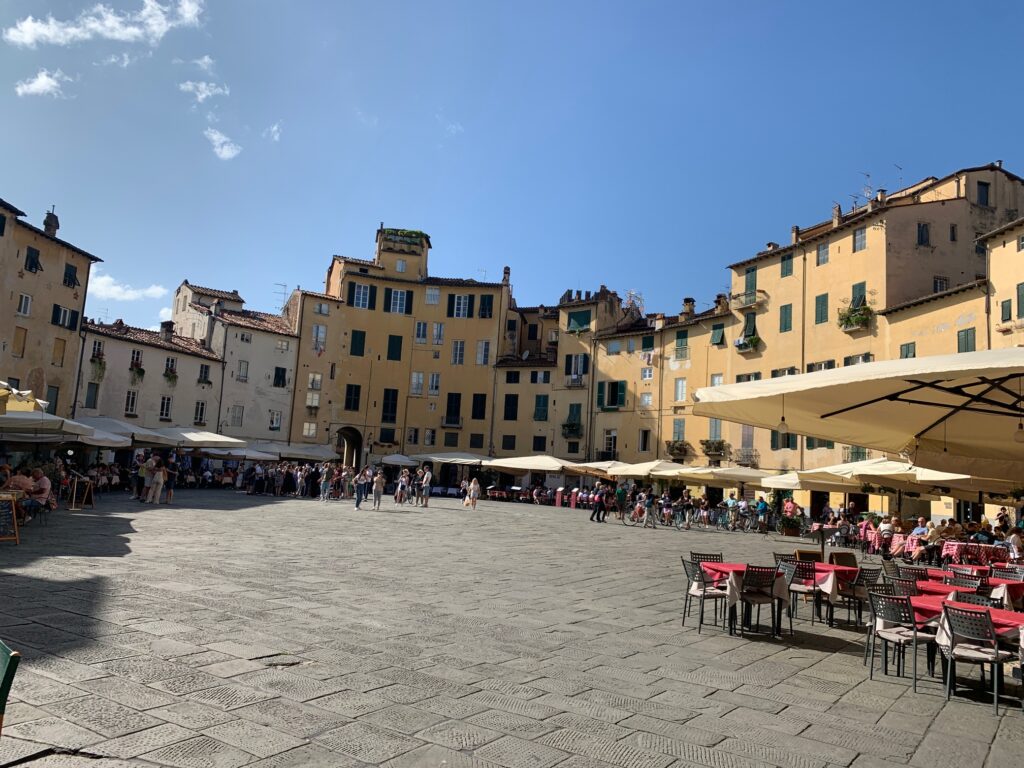

We got that authentic medieval feeling when we went through the city’s massive swing gates and drop timber gate. The streets were fun to walk. There were not many cars because the streets were mainly narrow. There were lots of shops, cafes, gelaterias and restaurants. There were also a few piazzas and towers. One tower even has a tree on top in which people lined up to see. Overall, Lucca was a nice place to explore.
Pisa
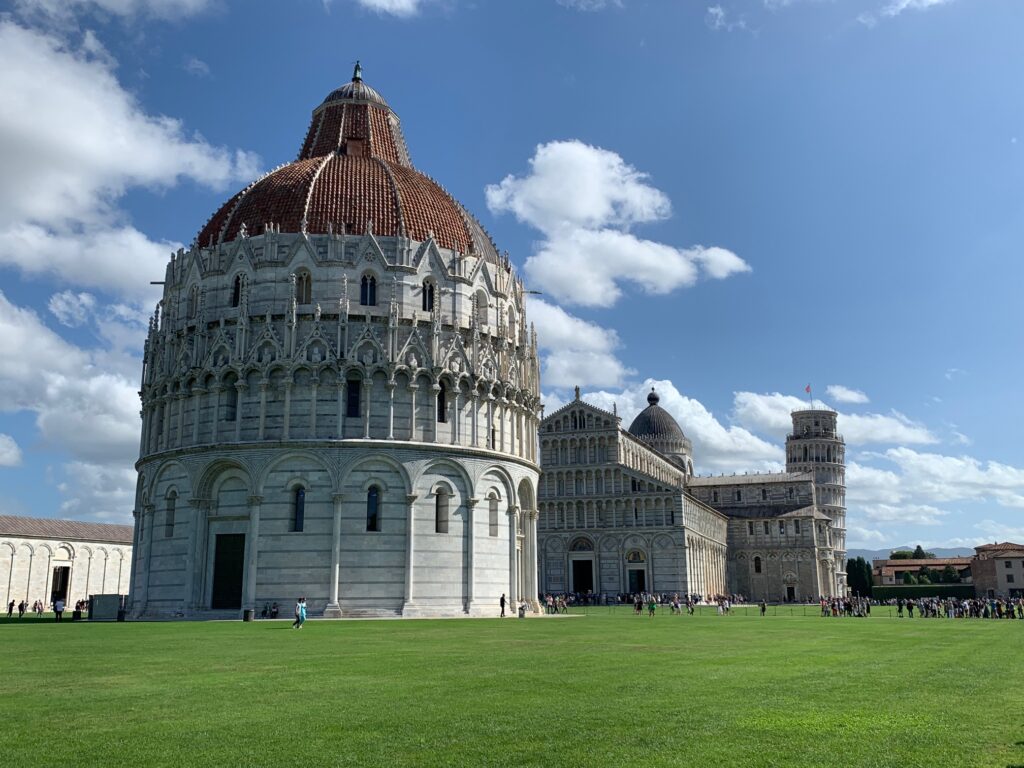

The leaning tower of Pisa is such an iconic landmark that we already knew of its existence when we were in elementary school in the Philippines. We could not believe that we finally laid eyes on the leaning tower.
There were so many people at Pisa on a Saturday that made it hard to take a photo without being photobombed. One of the staff said it is much worse (people wise) in June, July and August. Everybody was doing the propping the tower pose. We found that the best place to do this pose was near the basilica’s exit door. There were less people here.
Best to get entry tickets first if you want to enter the basilica or climb up the leaning tower. We obtained our basilica entry tickets in the afternoon and there was a three hour wait for our turn to enter. Entry to the basilica is free while it is a paid admission to climb the tower.
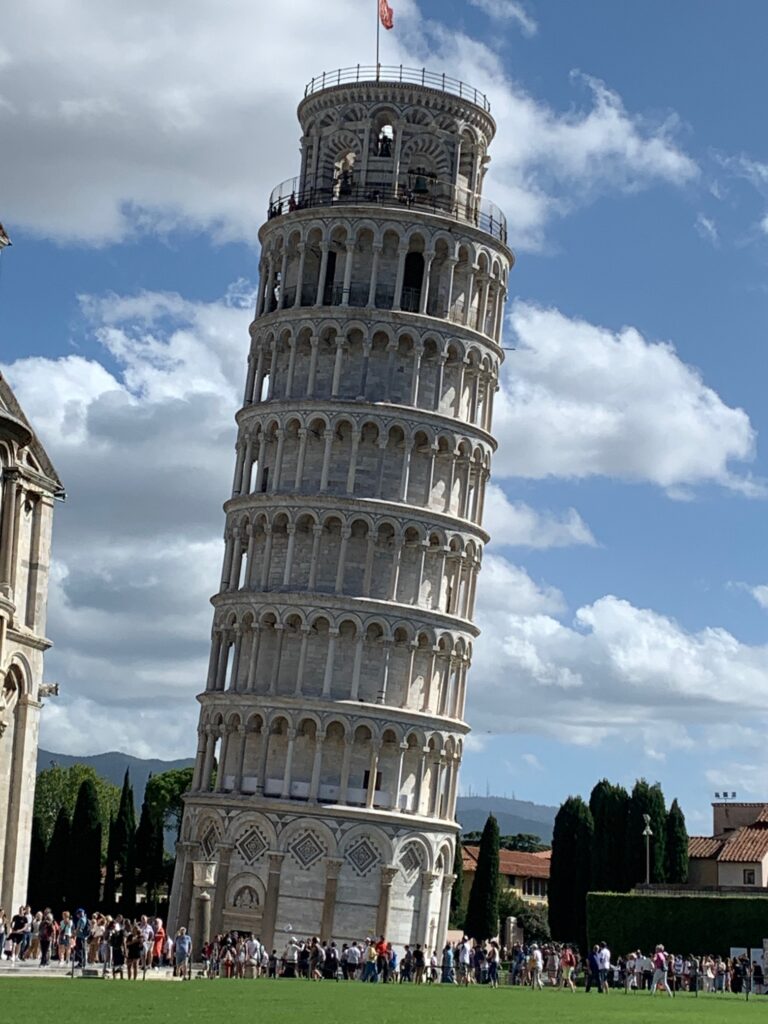

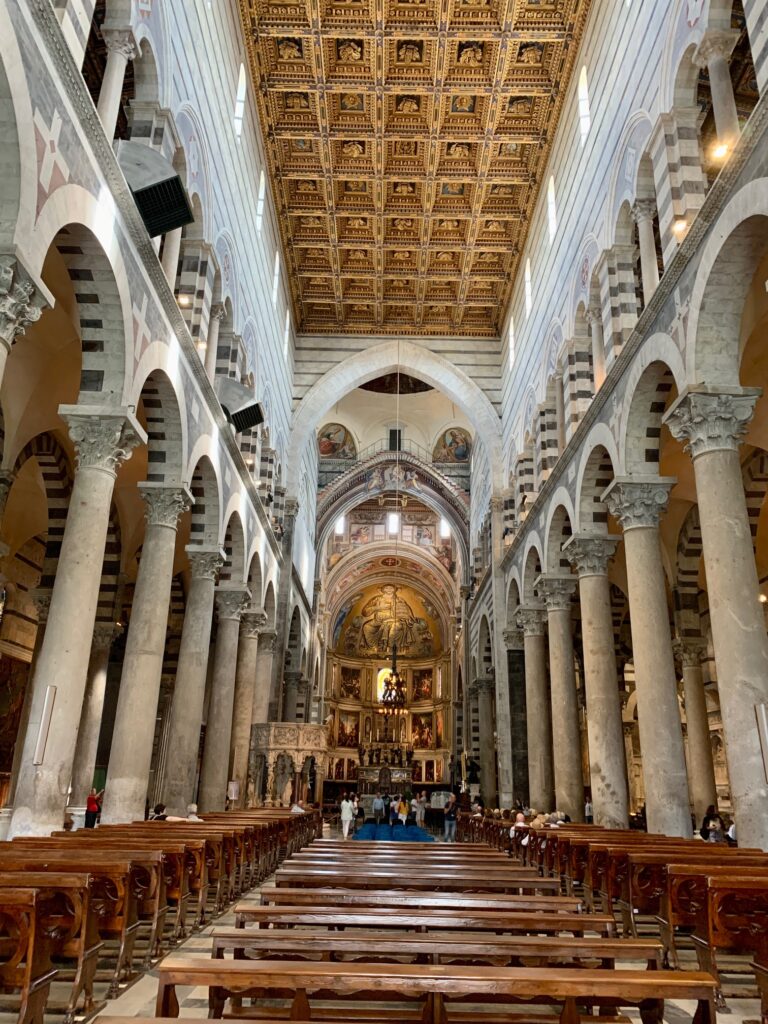

As far as places to eat, there are restaurants not far from the leaning tower. But expect to pay tourist prices at restaurants closer to the attraction. We walked a little further away and found L’Ostellino, a panini place at a small plaza named Piazza Cavallotti. Their paninis were good and not expensive. There were benches at the plaza which made it perfect for enjoying our sandwiches under the shade tree and among the locals.
Prato
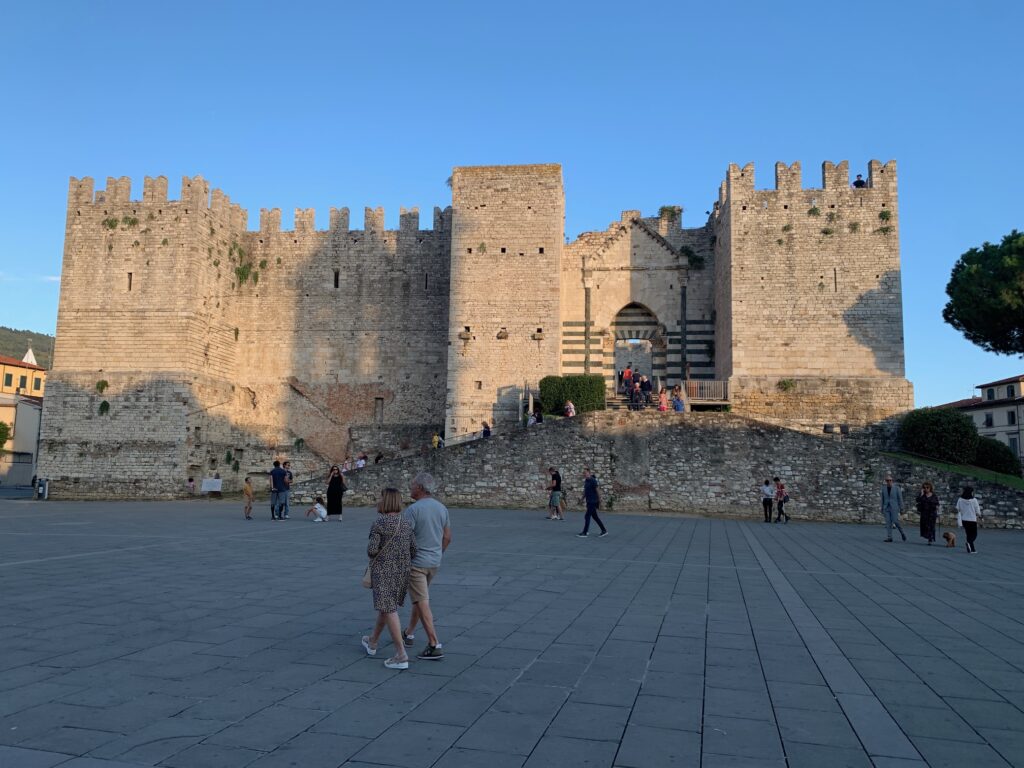

We based ourselves in Prato while exploring Bologna, Florence, Lucca and Pisa. We ended up in Prato because the accommodations in Florence were too expensive at the time we were looking. Prato is about a 30 minute train ride from Florence and trains were frequent and cheap enough such that it was a convenient base.
Prato is also a walled town but larger than Lucca. We found Prato to have a lot of charm with its restaurants and shops that come alive in the evening when locals are out and about.
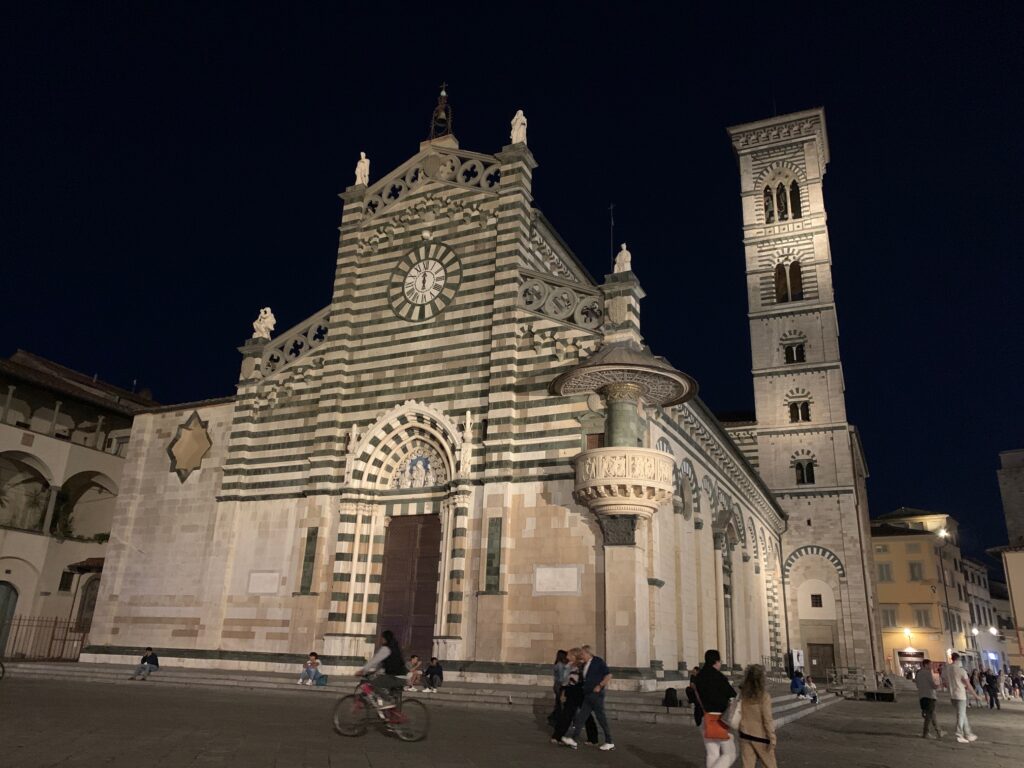

Saturnia
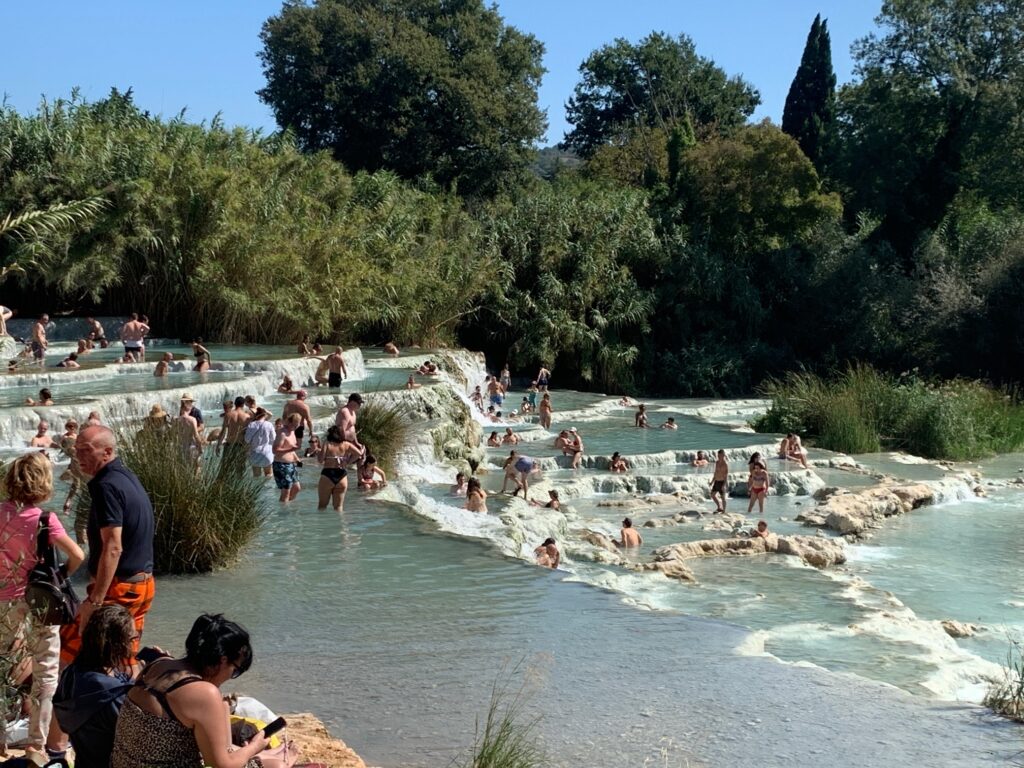

We only learned of Saturnia from the book The Bucket List – 1,000 Adventures Big and Small. The book had a picture of cascading water over white terraces with people soaking in its pools. Saturnia is actually the name of the small village nearest to the cascades. Best to rent a car to go to Saturnia as public transportation takes too long and is too complicated, according to what we found on the Internet.
The cascades are called Cascate del Molino (mill cascades). The water comes out of the ground by the mill structure. The water is lukewarm and some of the terraces are man made to create shallow pools behind it. These pools are just deep enough for an average adult to sit and be covered just below the armpits.. As an added bonus, you can lean on the terrace wall and get a hydromassage as the water cascades over your back.
People will spend hours just soaking here. The water has a strong sulfur smell that sticks to your clothes even after several washes (it eventually goes away). The cascades are open to the public (no fee) but the designated parking area about half a kilometer away requires a paid parking ticket to be displayed. Just enter the number of hours you intend to park when purchasing the parking ticket (at least two would be our suggestion but four would be better).
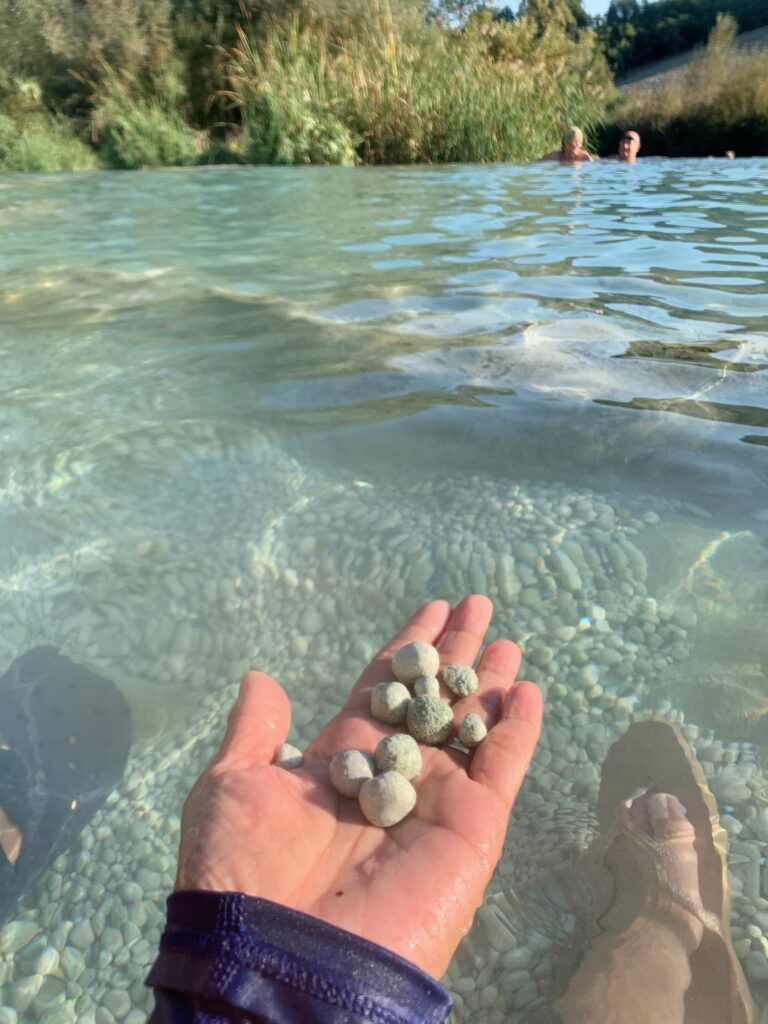

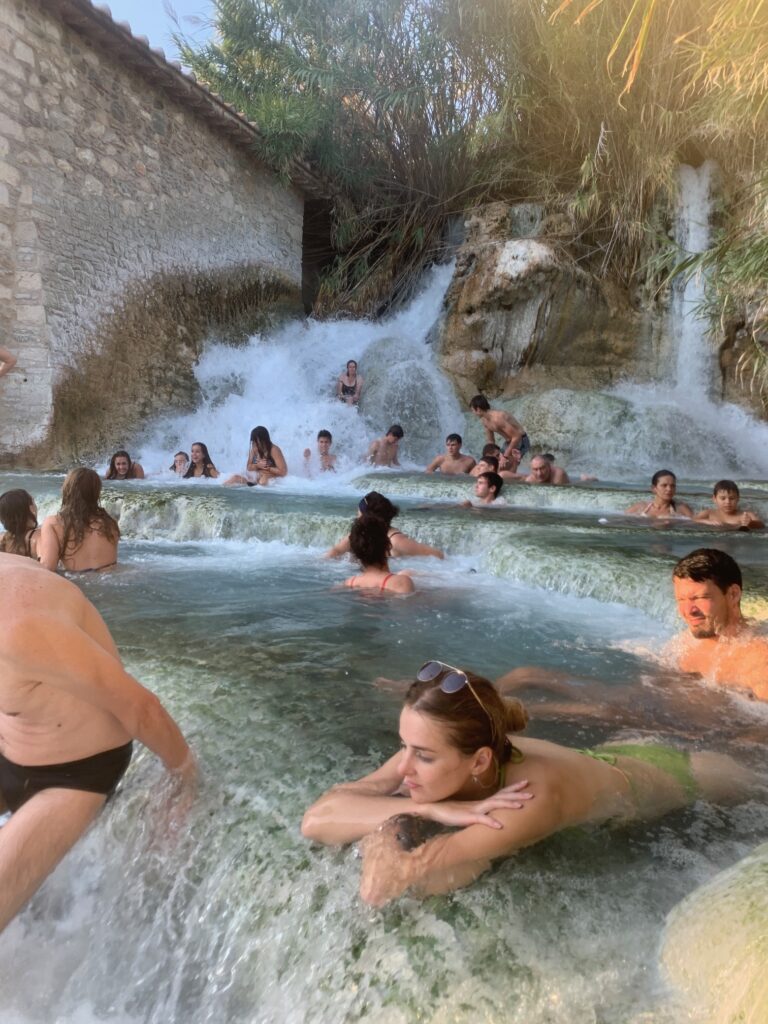

Aside from Cascate del Molino and Saturnia, there are other nearby small villages worth exploring. Manciano, Montemerano and Scansano were the only three we were able to visit during our brief time here. Scansano is home to Cantina Cooperativa Vignaioli del Morellino di Scansano which is a winery in a factory setting. Our host recommended the cantina for wine tasting. Unfortunately, we learned that day that reservations are needed ahead of time to do any wine tasting at any winery in the area. So we gave our livers a break.
Staying at a Tuscan villa here was very relaxing as well as enjoying the local cuisine or having a drink in any of the restaurants. The area is spared from mass tourism such that peace and quiet can be found. Our only regret in going to this part of Tuscany was that we only stayed two nights.
Beyond TuscanY
Bologna
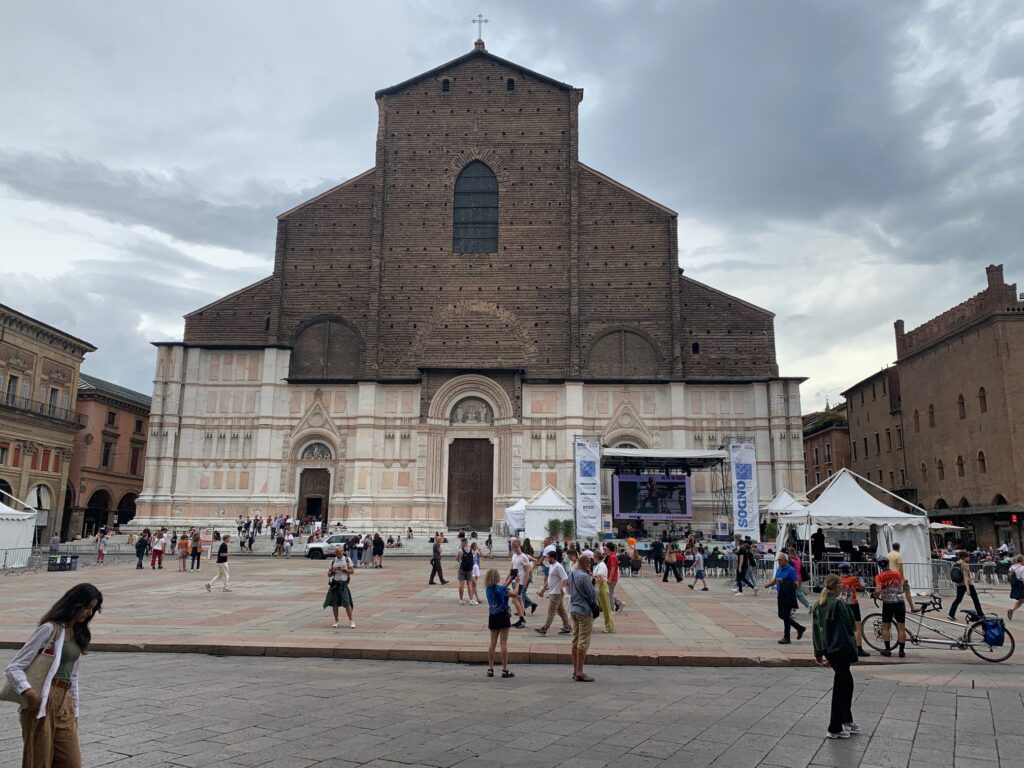

Though the Internet indicates that there is no definitive historical evidence that bolognese style pasta originated from the city of Bologna, it still felt cool to be able to get a taste of it from the city that has the same name. We indulged ourselves at Donatello restaurant which is in the heart of Bologna. The pasta was great but pricey, the tables have cloth covers, the waiters wore uniforms and the walls were decorated with nostalgic photos. In other words, the place has ambiance.
Besides Bolognese pasta, we will remember Bologna as the city with a profusion of beautiful arch hallways right on the side of the street. There are several churches visitors can take a peek at but the gothic Basilica di San Petronio at Piazza Maggiore is the one that is etched in our minds. The basilica facade appears unfinished as the bottom half consists of white marbles while the top half is brick. Inside are 22 side chapels that are ornately decorated. They do not allow women wearing shorts to go inside the basilica but they do sell a thin fabric to cover the exposed legs.
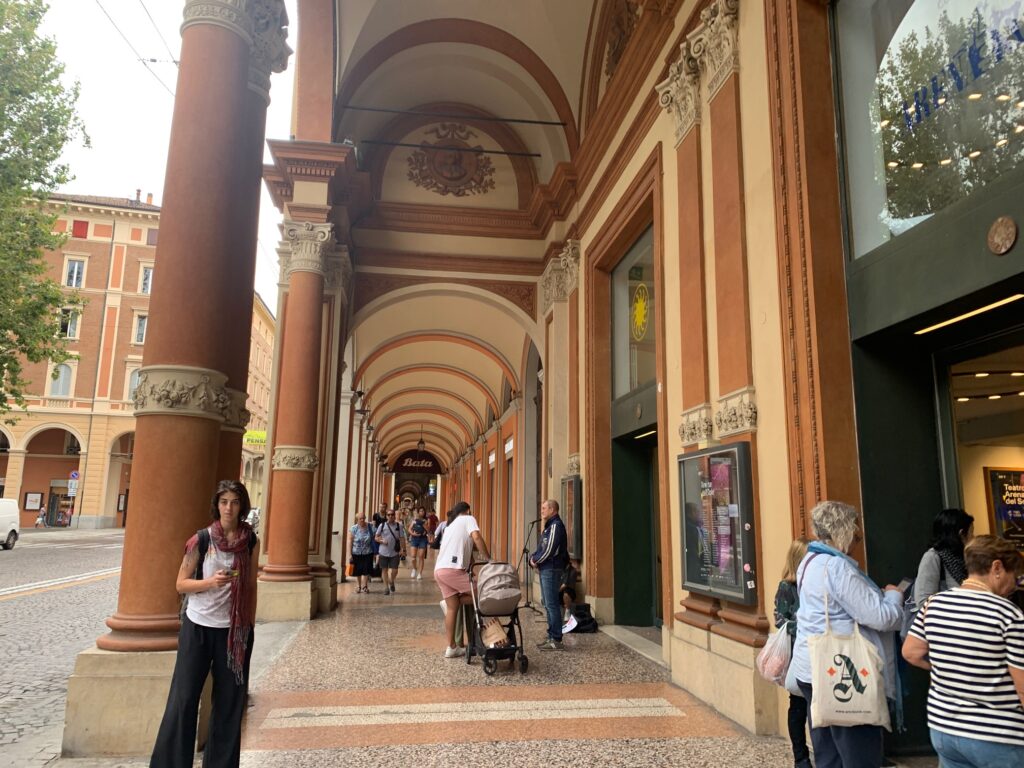

There are several designer name shops in Bologna. The only issue is that these shops are scattered throughout and not at one location.
Summary
Tuscany is a region in central Italy. The region’s capital – Florence, is home to some of the world’s most recognizable Renaissance art and architecture like Michelangelo’s “David” statue and the Duomo basilica.
Most people probably conjure thoughts of rolling hills covered with vineyards and Tuscan villas when they hear the word Tuscany. Few probably know that the leaning tower of Pisa is located in the Tuscan region. Even less probably know of the many small villages and cities in the region that are rich in history such as the walled city of Lucca and Prato. Saturnia is home to the Cascate del Mulino, a white terraced waterway with flowing lukewarm spring water perfect for soaking.
While in the region, might as well venture out and visit Bologna and eat pasta in the city that bears the same name.

